Trainingsprogram Equitherapy
The Equitherapist - a dream profession?
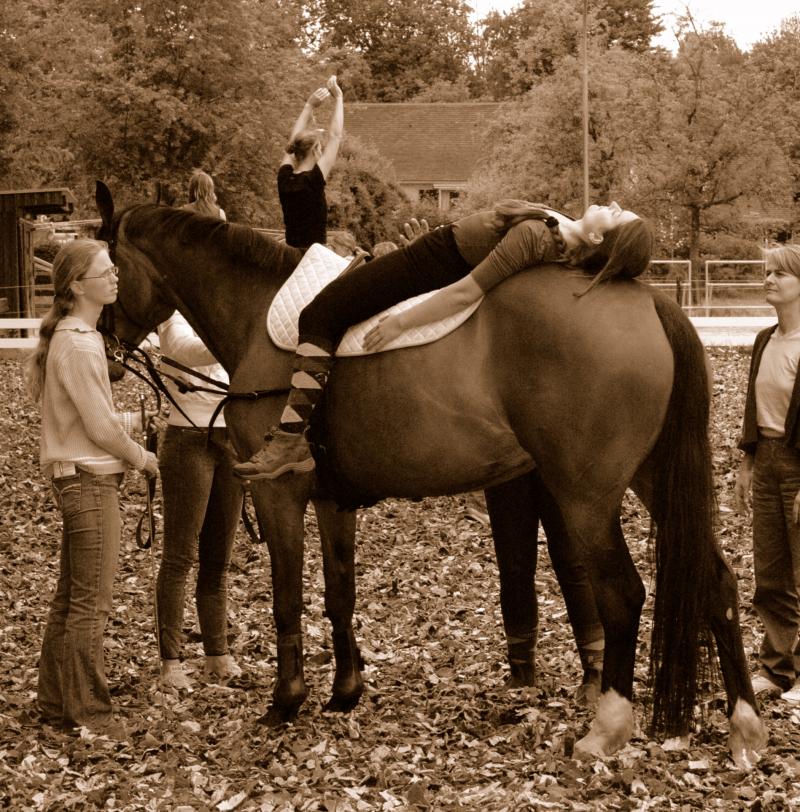 Working with clients and with a horse as co-therapist is truly fascinating. Personally, I cannot imagine a more satisfying career and enjoy both the therapies I provide and the horses I work with in training and between their professional activities. My colleagues and lecturers on the equitherapy training programme feel the same. Like me, they too have the inner fire that is needed to exercise this profession and are able to draw huge amounts of energy from the therapies and from working with our wonderful horses. This is essential to the responsible practice of these activities. However, I should also say that it is certainly not a dream profession in the literal sense. Firstly, if equitherapy is practised well and on a self-employed basis, it is not a way to get rich, as, given the time and energy that must be invested, the income can only be considered modest. Although the costs and the work relating to the horses, which may often also be viewed as a hobby between therapy sessions, can be justified in terms of the notion of an ideal job, they are not so easy to justify from an economic point of view. If all the costs were fully reckoned up and passed on, then clients from more disadvantaged social backgrounds would probably not be able to benefit from these therapies. It is therefore a very good idea for equitherapists, in particular those coming new to the profession, to have a second source of income or primary profession, or to consider practising equitherapy as an employee. Equitherapists should also be able to give very precise information about their work and put forward good arguments to those making referrals, those who bear the costs, and also to clients themselves, to enable them to claim wherever possible for this therapy from a social security and medical budget with ever-decreasing resources.
Working with clients and with a horse as co-therapist is truly fascinating. Personally, I cannot imagine a more satisfying career and enjoy both the therapies I provide and the horses I work with in training and between their professional activities. My colleagues and lecturers on the equitherapy training programme feel the same. Like me, they too have the inner fire that is needed to exercise this profession and are able to draw huge amounts of energy from the therapies and from working with our wonderful horses. This is essential to the responsible practice of these activities. However, I should also say that it is certainly not a dream profession in the literal sense. Firstly, if equitherapy is practised well and on a self-employed basis, it is not a way to get rich, as, given the time and energy that must be invested, the income can only be considered modest. Although the costs and the work relating to the horses, which may often also be viewed as a hobby between therapy sessions, can be justified in terms of the notion of an ideal job, they are not so easy to justify from an economic point of view. If all the costs were fully reckoned up and passed on, then clients from more disadvantaged social backgrounds would probably not be able to benefit from these therapies. It is therefore a very good idea for equitherapists, in particular those coming new to the profession, to have a second source of income or primary profession, or to consider practising equitherapy as an employee. Equitherapists should also be able to give very precise information about their work and put forward good arguments to those making referrals, those who bear the costs, and also to clients themselves, to enable them to claim wherever possible for this therapy from a social security and medical budget with ever-decreasing resources. To many riders and horse-lovers who work in one of the helping professions, the work of the equitherapist seems to be the ideal
opportunity to combine the primary profession for which they qualified, with their hobby, horses. Added to this, they often have experiences of their own of the way they deal with and relate to horses, and therefore a first-hand insight into the possibilities of the positive effect horses can have on personal development and support. Many pony-loving girls also see equitherapy as a dream profession, one in which they can
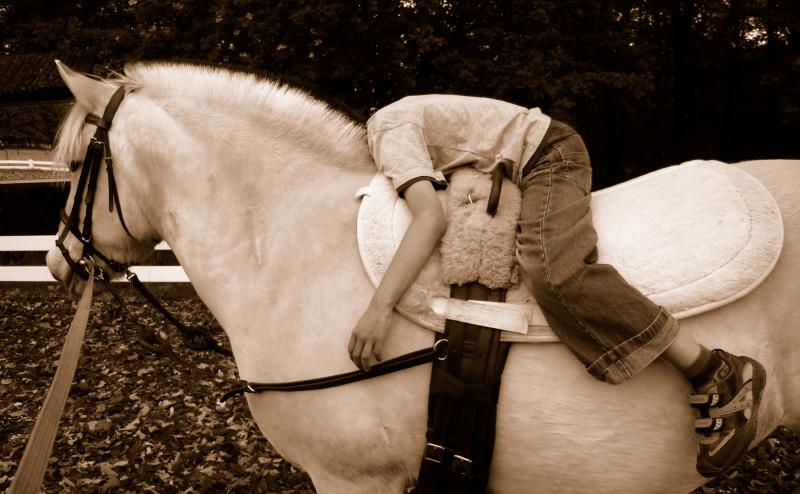 help people. Not infrequently, candidates for the training programme may also be horse-lovers and hobby riders who themselves
help people. Not infrequently, candidates for the training programme may also be horse-lovers and hobby riders who themselves
have encountered problems which they have solved or want to solve with the help of a horse. Experience over the last 10 years has shown that the profession can attract some serious and very capable candidates, but also some who are thoroughly unprofessional and, not infrequently, people who are themselves mentally ill. For this reason, before training commences, and throughout the training programme, candidates should be closely observed, and those who are not stable enough in their own development, their professional practice and the way they handle horses should not embark upon this training in such phases of their lives. Care should also be taken to ensure that candidates who cannot achieve the skills rofile of an equitherapist capable of practising professionally are not awarded the diploma. Furthermore, qualified equitherapists are expected to undertake continuing education, to be fully au fait with the ethical standards of their profession and also to have a continuous quality control procedure in place. In these aspects the training provider has a clear responsibility
towards clients, those paying for the service and, not least, the horses. Many candidates who come forward satisfy the basic requirements, but there are also those who do not. The SHP-E(NL) equitherapist training programme is aimed at those who are interested in, and capable
of, seeing the role of the horse as part of a cyclical process under responsible guidance, and who are prepared to work, often very hard, to obtain the necessary skills and qualifications. As responsible work with horses as part of the therapeutic process requires therapists to take
seriously the signals and information given by their equine partners, including those which relate to the therapists themselves, this may lead to some quite substantial confrontations with their own weaknesses or problems, which should not be allowed to adversely affect the client, the therapy horse or the process itself. The use of horses in accordance with the SHP guidelines also requires a sound basic understanding
of equine biomechanics, sports physiology and, indeed, the psyche of the horse, as well as training in accordance with classic guidelines
and requirements (concerning handling and care). Neither a pure "stimulusresponse view of the equine aspect nor an anthropomorphism or "mysticising of the contribution of the horse to the process are desirable. For many horse lovers this means adapting and developing their own understanding of working with horses and their relationship to their equine partners.
opportunity to combine the primary profession for which they qualified, with their hobby, horses. Added to this, they often have experiences of their own of the way they deal with and relate to horses, and therefore a first-hand insight into the possibilities of the positive effect horses can have on personal development and support. Many pony-loving girls also see equitherapy as a dream profession, one in which they can
 help people. Not infrequently, candidates for the training programme may also be horse-lovers and hobby riders who themselves
help people. Not infrequently, candidates for the training programme may also be horse-lovers and hobby riders who themselveshave encountered problems which they have solved or want to solve with the help of a horse. Experience over the last 10 years has shown that the profession can attract some serious and very capable candidates, but also some who are thoroughly unprofessional and, not infrequently, people who are themselves mentally ill. For this reason, before training commences, and throughout the training programme, candidates should be closely observed, and those who are not stable enough in their own development, their professional practice and the way they handle horses should not embark upon this training in such phases of their lives. Care should also be taken to ensure that candidates who cannot achieve the skills rofile of an equitherapist capable of practising professionally are not awarded the diploma. Furthermore, qualified equitherapists are expected to undertake continuing education, to be fully au fait with the ethical standards of their profession and also to have a continuous quality control procedure in place. In these aspects the training provider has a clear responsibility
towards clients, those paying for the service and, not least, the horses. Many candidates who come forward satisfy the basic requirements, but there are also those who do not. The SHP-E(NL) equitherapist training programme is aimed at those who are interested in, and capable
of, seeing the role of the horse as part of a cyclical process under responsible guidance, and who are prepared to work, often very hard, to obtain the necessary skills and qualifications. As responsible work with horses as part of the therapeutic process requires therapists to take
seriously the signals and information given by their equine partners, including those which relate to the therapists themselves, this may lead to some quite substantial confrontations with their own weaknesses or problems, which should not be allowed to adversely affect the client, the therapy horse or the process itself. The use of horses in accordance with the SHP guidelines also requires a sound basic understanding
of equine biomechanics, sports physiology and, indeed, the psyche of the horse, as well as training in accordance with classic guidelines
and requirements (concerning handling and care). Neither a pure "stimulusresponse view of the equine aspect nor an anthropomorphism or "mysticising of the contribution of the horse to the process are desirable. For many horse lovers this means adapting and developing their own understanding of working with horses and their relationship to their equine partners.
The aim of the training concept
is to produce (and further develop by means of systematic experience) equitherapists who are capable of using their skills and qualifications appropriately under their own responsibility, and who are aware of their obligations towards their clients and horses. They will be professionals who continue their education on completion of their training and ensure their own continual process of development as equitherapists by means of supervision and intervision between colleagues
Access criteria
SHP-E(NL) equitherapy training is open to applicants with a psychotherapeutic, educational or paramedic background, who also have a riding qualification or who at the start of their training have sufficient experience with horses (Llevel riding and training) and intend to acquire the vaulting instructor qualification during their training. Four different qualifications are available, depending on the student's basic education, professional experience and verifiable further training:
SHP-E(NL) equitherapy training is open to applicants with a psychotherapeutic, educational or paramedic background, who also have a riding qualification or who at the start of their training have sufficient experience with horses (Llevel riding and training) and intend to acquire the vaulting instructor qualification during their training. Four different qualifications are available, depending on the student's basic education, professional experience and verifiable further training:
Equitherapist
Equitherapeutic assistant
Equitherapy coordinator
Activity supervisor EAA (Equine Assisted Activities)
Course requirements:
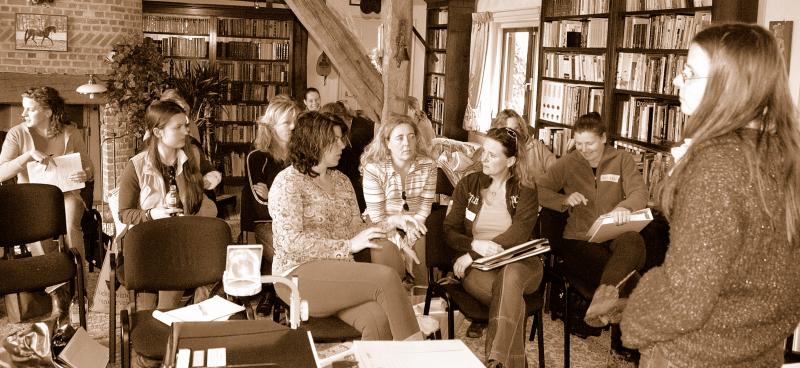 Applicants are selected during a two-day introductory workshop and subsequent individual interview. In addition to gaining an overview of the methods and course content, applicants also have an opportunity to work in small groups with the therapy horses during the introductory workshop. This gives applicants first-hand experience of whether the course's process-based approach suits them and whether they have sufficient experience of horses and of supervising processes in a professional capacity. During the interview the prospective applicants' formal qualifications and eligibility are examined in addition to their motivation and expectations: Applicants are also required to register
Applicants are selected during a two-day introductory workshop and subsequent individual interview. In addition to gaining an overview of the methods and course content, applicants also have an opportunity to work in small groups with the therapy horses during the introductory workshop. This gives applicants first-hand experience of whether the course's process-based approach suits them and whether they have sufficient experience of horses and of supervising processes in a professional capacity. During the interview the prospective applicants' formal qualifications and eligibility are examined in addition to their motivation and expectations: Applicants are also required to register
with SHP-E(NL), the umbrella organisation for therapeutic riding in the Netherlands, and must finally be accepted by the training commission.
 Applicants are selected during a two-day introductory workshop and subsequent individual interview. In addition to gaining an overview of the methods and course content, applicants also have an opportunity to work in small groups with the therapy horses during the introductory workshop. This gives applicants first-hand experience of whether the course's process-based approach suits them and whether they have sufficient experience of horses and of supervising processes in a professional capacity. During the interview the prospective applicants' formal qualifications and eligibility are examined in addition to their motivation and expectations: Applicants are also required to register
Applicants are selected during a two-day introductory workshop and subsequent individual interview. In addition to gaining an overview of the methods and course content, applicants also have an opportunity to work in small groups with the therapy horses during the introductory workshop. This gives applicants first-hand experience of whether the course's process-based approach suits them and whether they have sufficient experience of horses and of supervising processes in a professional capacity. During the interview the prospective applicants' formal qualifications and eligibility are examined in addition to their motivation and expectations: Applicants are also required to registerwith SHP-E(NL), the umbrella organisation for therapeutic riding in the Netherlands, and must finally be accepted by the training commission.
The foundation course (1st year)
This consists of 9 two-day course modules and an exam module spread over one year with the same student group. The course is supplemented with theory, practical exercises, self-awareness and supervision. With additional reading and assignments to be completed in free time, students are required to successfully complete a practical assessment and an exam to pass the foundation course.Only students who have passed the exam and have a minimum 85 % attendance record for the modules can enrol on the second phase.
This consists of 9 two-day course modules and an exam module spread over one year with the same student group. The course is supplemented with theory, practical exercises, self-awareness and supervision. With additional reading and assignments to be completed in free time, students are required to successfully complete a practical assessment and an exam to pass the foundation course.Only students who have passed the exam and have a minimum 85 % attendance record for the modules can enrol on the second phase.
Advanced course with specilisation (2nd year)
This also consists of 9 two-day course modules and an exam module spread over one year with the same student group.
This course focuses on specialisation:
remedial educational support
psychosocial support
developmental support
rehabilitation and reintegration
equine-facilitated psychotherapy
remedial educational support
psychosocial support
developmental support
rehabilitation and reintegration
equine-facilitated psychotherapy
In this phase the trainee equitherapists work under supervision in their chosen field and are given the necessary tools to make significant use of the horse and horse-based activities, subject to their specialism and client, and to find their own way. This phase of the course is largely practise and supervision-based. Students must pass the practical project and theory exam and have an 85 % attendance record for the course modules in order to sit the final exam.
Diploma in equitherapy (SHP-E(NL):
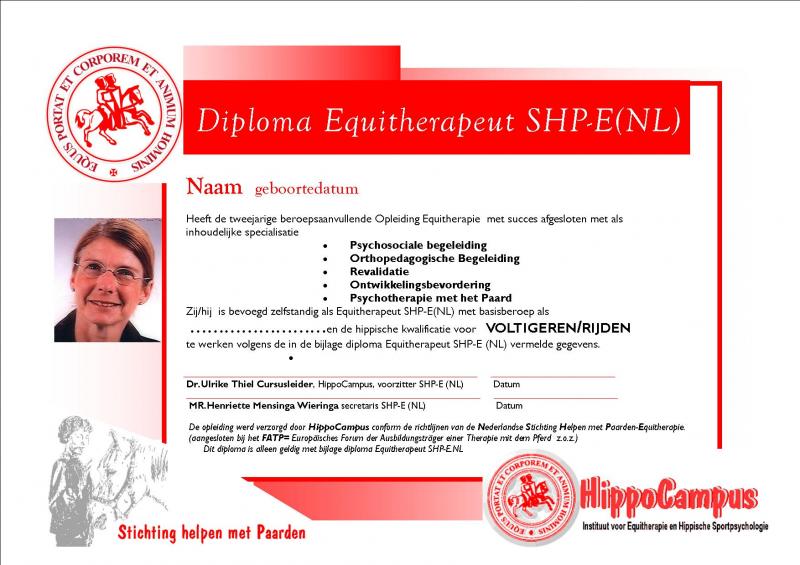 The SHP-E(NL) training commission awards the diploma to students who have successfully completed phase 1 and 2 of the training course, have attended all necessary supplementary modules and training courses and have a first aid certificate and riding qualification. A police clearance certificate is also required, as is customary for therapeutic professions.
The SHP-E(NL) training commission awards the diploma to students who have successfully completed phase 1 and 2 of the training course, have attended all necessary supplementary modules and training courses and have a first aid certificate and riding qualification. A police clearance certificate is also required, as is customary for therapeutic professions. Lecturers, supervisors and, examiners
These are graduate colleagues from other countries (currently mainly equitherapists and educators from FATP -affiliated organisations) with more than 8 years' professional experience, and training and experience in supervision and group dynamics, who also work as lecturers within their own organisations and are familiar with the guidelines and performance profile of SHP and support it.
These are graduate colleagues from other countries (currently mainly equitherapists and educators from FATP -affiliated organisations) with more than 8 years' professional experience, and training and experience in supervision and group dynamics, who also work as lecturers within their own organisations and are familiar with the guidelines and performance profile of SHP and support it.
Aim of the foundation and advanced course:
Understanding of the concept and transfer of own (theoretical) working model from primary profession to the triangular therapeutic relationship between therapist, client and horse. Understanding of ethical issues and compliance with SHP-E(NL) guidelines. Use of examplesprovided of successful equitherapy models from different fields. Awareness of the advantages and disadvantages of different methods. Defining the role of the horse within different models of Animal Mediated Therapy and Animal Assisted Therapy. Exercises, use of materials, objective development of exercises, equine technique and the role of the horse in the therapeutic process. At the end of the foundation course the therapist should have gained sufficient knowledge and experience in a safe classroom environment to work with clients and horses.
Understanding of the concept and transfer of own (theoretical) working model from primary profession to the triangular therapeutic relationship between therapist, client and horse. Understanding of ethical issues and compliance with SHP-E(NL) guidelines. Use of examplesprovided of successful equitherapy models from different fields. Awareness of the advantages and disadvantages of different methods. Defining the role of the horse within different models of Animal Mediated Therapy and Animal Assisted Therapy. Exercises, use of materials, objective development of exercises, equine technique and the role of the horse in the therapeutic process. At the end of the foundation course the therapist should have gained sufficient knowledge and experience in a safe classroom environment to work with clients and horses.
General topics
Technique, therapeutic process, interventions and process supervision (supervision, evaluation and intervision - peer-assisted discussions)
Personal therapeutic process, recognition of individual capabilities and limitations and integration of equitherapy in the therapeutic or educational methodology of primary occupation. Development of specialisation.
Assessment of the therapeutic processes, evaluation methods and reporting techniques
Basic educational and psychotherapeutic principles of SHP-E(NL) equitherapy
Definition of equitherapy and its various specialist fields
Indications and contraindications for equitherapy
Theoretical basis and approach
Physical experience and non-verbal communication
Personality issues arising from interacting with horse and client
Therapeutic performance and safety aspects
Working with horses
Training the therapy horse
Mental health of the therapy horse
Structure and sequence of therapy sessions and therapy planning
Preliminary assessment and discussions with client and referrer
Target setting and process control
Inter-disciplinary cooperation
Ethical and behavioural guidelines
Development of behavioural criteria for process evaluation
Knowledge, understanding and evaluation of process
Establishing a human-horse working relationship and its value within the therapeutic setting
The triangular relationship between therapist-client-horse and responsibilities, functions and objectives
Creating the primary structure for the therapeutic process
Creating the possibility sphere
Horsemanship, riding techniques and the psychology of the horse
Knowledge and practice of traditional equine management and healthcare
The effect of stable management, training conditions and mental health of the therapy horse
Technique, therapeutic process, interventions and process supervision (supervision, evaluation and intervision - peer-assisted discussions)
Personal therapeutic process, recognition of individual capabilities and limitations and integration of equitherapy in the therapeutic or educational methodology of primary occupation. Development of specialisation.
Assessment of the therapeutic processes, evaluation methods and reporting techniques
Basic educational and psychotherapeutic principles of SHP-E(NL) equitherapy
Definition of equitherapy and its various specialist fields
Indications and contraindications for equitherapy
Theoretical basis and approach
Physical experience and non-verbal communication
Personality issues arising from interacting with horse and client
Therapeutic performance and safety aspects
Working with horses
Training the therapy horse
Mental health of the therapy horse
Structure and sequence of therapy sessions and therapy planning
Preliminary assessment and discussions with client and referrer
Target setting and process control
Inter-disciplinary cooperation
Ethical and behavioural guidelines
Development of behavioural criteria for process evaluation
Knowledge, understanding and evaluation of process
Establishing a human-horse working relationship and its value within the therapeutic setting
The triangular relationship between therapist-client-horse and responsibilities, functions and objectives
Creating the primary structure for the therapeutic process
Creating the possibility sphere
Horsemanship, riding techniques and the psychology of the horse
Knowledge and practice of traditional equine management and healthcare
The effect of stable management, training conditions and mental health of the therapy horse
Individual process-based topics
Self-awareness
Self-discovery
Feedback
Observation, intervision, supervision
Me and the horse - status report (observation and evaluation of personal process)
Supplementary riding modules
Anxiety and riding
Psychomotor skills: establishing independent sitting and giving commands
Sport physiology and sport psychology
The psychology of horse and man
Lunging during training and with clients Course structure, organisation and allocation of hours
Anxiety and riding
Psychomotor skills: establishing independent sitting and giving commands
Sport physiology and sport psychology
The psychology of horse and man
Lunging during training and with clients Course structure, organisation and allocation of hours
1/3 theory and literature study
1/3 practical exercises and self-awareness
1/3 structuring, formulating and evaluating
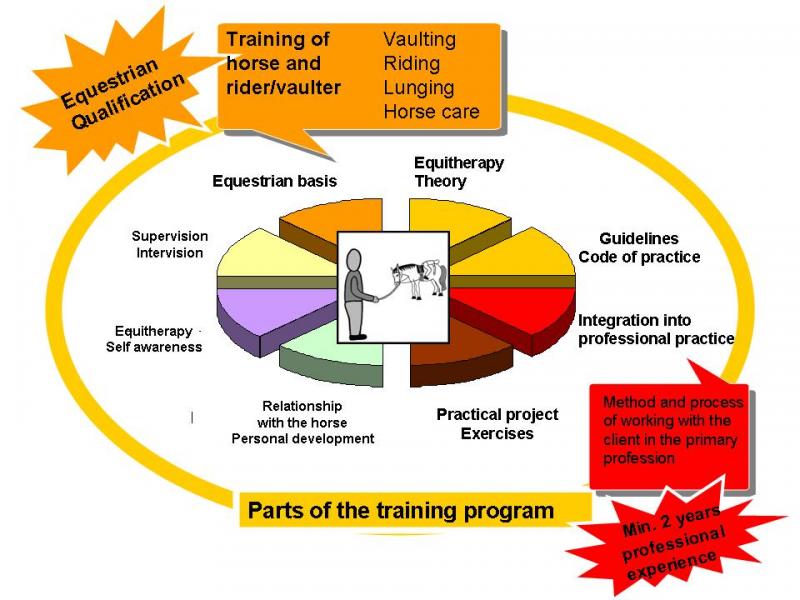
Individual training path Intermediate and final examination
At the end of the first year, the trainee equitherapist must be capable of conducting a preliminary assessment, devising a treatment plan and organising 10 equitherapy sessions with a (pseudo) client and a therapy horse with peer-assisted intervision from a fellow trainee. Training is intervision- based and the student must also demonstrate that he can create something independently and, despite difficulties,see it through. The student is permitted to make mistakes, but must have the required level of critical analysis. He must demonstrate that he was able to put into practice the theoretical principles acquired during the course. The practical project is assessed on the basis of standard criteria by means of an oral examination in which the following points are assessed on a scale of 1 - 10:
At the end of the first year, the trainee equitherapist must be capable of conducting a preliminary assessment, devising a treatment plan and organising 10 equitherapy sessions with a (pseudo) client and a therapy horse with peer-assisted intervision from a fellow trainee. Training is intervision- based and the student must also demonstrate that he can create something independently and, despite difficulties,see it through. The student is permitted to make mistakes, but must have the required level of critical analysis. He must demonstrate that he was able to put into practice the theoretical principles acquired during the course. The practical project is assessed on the basis of standard criteria by means of an oral examination in which the following points are assessed on a scale of 1 - 10:
1. Process understanding and process supervision
2. Practical performance
3. Chosen method
4. Client relationship
5. Horse relationship
6. Professional manner
7. Safety and consideration of general equitherapy standards
8. Critical attitude and critical analysis of own performance
Students are additionally required to answer theoretical questions from the syllabus. Students who successfully pass the intermediate exam may then go on to the second phase of the course: They then take a final examination on the same basis.Students should then have acquired the necessary skills to become an equitherapist. The practical project The aim of the practical project is to familiarise trainee equitherapists with all aspects of their future career. Participants very quickly realise whether they possess the necessary drive to design and implement a course of therapy independently.
The supervision that takes place provides a context for training and standards. Participants tend to find the practical project an very positive, but also extremely challenging experience. On completion they admit to having learnt a great deal about themselves and to have a better understanding of their strengths and weaknesses in their role as therapist, which they can then address professionally in their work.
The supervision that takes place provides a context for training and standards. Participants tend to find the practical project an very positive, but also extremely challenging experience. On completion they admit to having learnt a great deal about themselves and to have a better understanding of their strengths and weaknesses in their role as therapist, which they can then address professionally in their work.
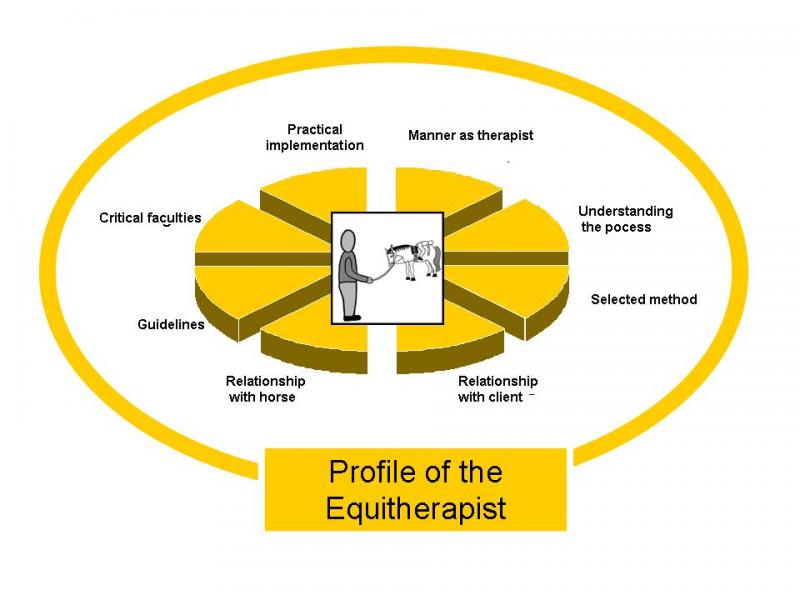
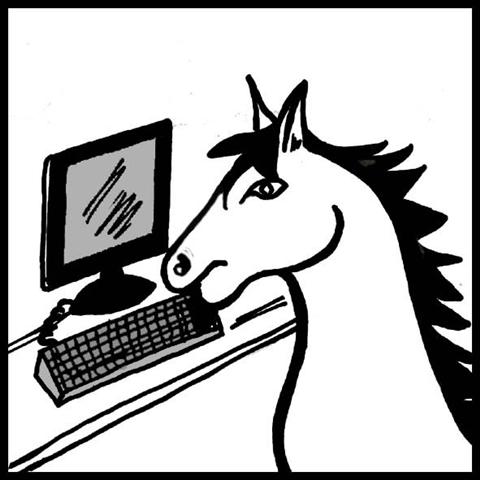 Copyright: No part of this publication may be reproduced or published by print, microfilm placement on internet or by any means without the prior permission of the publisher. Citation is allowed following the scientific citation rules. Author: U.Thiel www.equitherapie.org Date of update
Copyright: No part of this publication may be reproduced or published by print, microfilm placement on internet or by any means without the prior permission of the publisher. Citation is allowed following the scientific citation rules. Author: U.Thiel www.equitherapie.org Date of update 
